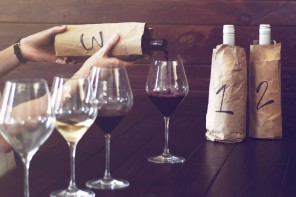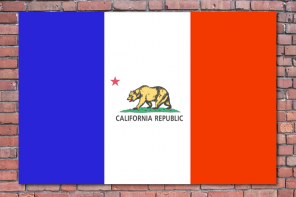It’s Sunday morning and for once, the city sleeps. The usual rush of cyclists, car horns and pompiers sirens have finally come to a halt. With close attention, one can even hear the slight breeze rustling the trees over in the Buttes Chaumonts. Sunlight creeps through the window, dancing across the cracked wood floors of the fifth-floor walkup. In the distance, a faint chiming of church bells call people through its doors; Paris on a Sunday morning, serenity in the midst of an ever-moving city – except for that one stretch on Boulevard Richard Lenoir.
On Sunday mornings at 7 am sharp, the Marché Bastille opens on Richard Lenoir in Paris’ chic 11th arrondissement. Market vendors arrive at sunrise to set up shop, displaying their supply of produce, fresh meats and baked goods for locals to come and buy. Though it hasn’t been proven, it’s clear they save their best for the Sunday morning market – ‘Sunday best,’ if you will. Neighborhood dwellers turn up with their empty sacs and push-carts, ready to stock up on their weekly supply of ripe produce and artisanal cheeses.
Simply put, the market is a sensory overload; brightly colored produce of all shapes and sizes lay perfectly stacked atop one another, as vendors shout their discounts of the day into the bustling crowd. Silky scarves and cold copper jewelry contrast their graze against shoppers’ fingertips; though most of all, it’s the smells of the market that sends one spiraling into sensory overload. Pungent cheeses and rotisserie chickens flood market goers’ nostrils, simultaneously, crashing against one another to create the perfect collision of savory zest. Two stalls down, and their marriage is gone, replaced with the youthful aromas of freshly picked strawberries and plump, sappy figs. Want to learn about wine in the most unconventional way? Head to the market.
Developing wine tasting abilities stems from the understanding of one’s own palate and senses. Identifying aromas and nuances in wine comes from a mental storage bank of things already smelled and tasted. At the market, building sensory identification has never been easier. Pick up a vegetable and hold it to your nose, inhaling its unique aromas into your memory. Run your fingers along the skins of a fuzzy peach, noting how its fleecy exterior feels against your fingers. Purchase a ripe nectarine and bite into its succulent flesh, letting the fresh juice dribble down your chin. Taste every sample directed your way, whether it’s a hunk of hard cheese or a morceau of freshly cut melon. Do this repeatedly, and you’ll begin to see these nuances come to life in future glasses of your favorite vino.
Speaking of vino, there is always a producer or two at the market, set up behind a modest stall, with only a few bottles placed in front of them; don’t let this opportunity pass you by. There’s something unique about purchasing a bottle directly from the hands that made it, feeling the ruggedness of their dirt-clad fingers place their very own masterpiece into your grasp, quite literally seeing the face behind the bottle. Hearing the mere clink of euro coins splash into their palms assures that you’ve not only gotten your daily dose for tonight’s meal, but you’ve supported a local farmer along the way. A few hours from now, you’ll pour a glass, closing your eyes to savor the aromas wafting into your nose; who knows, you might even identify something from the produce stall you lingered at just earlier this morning.







